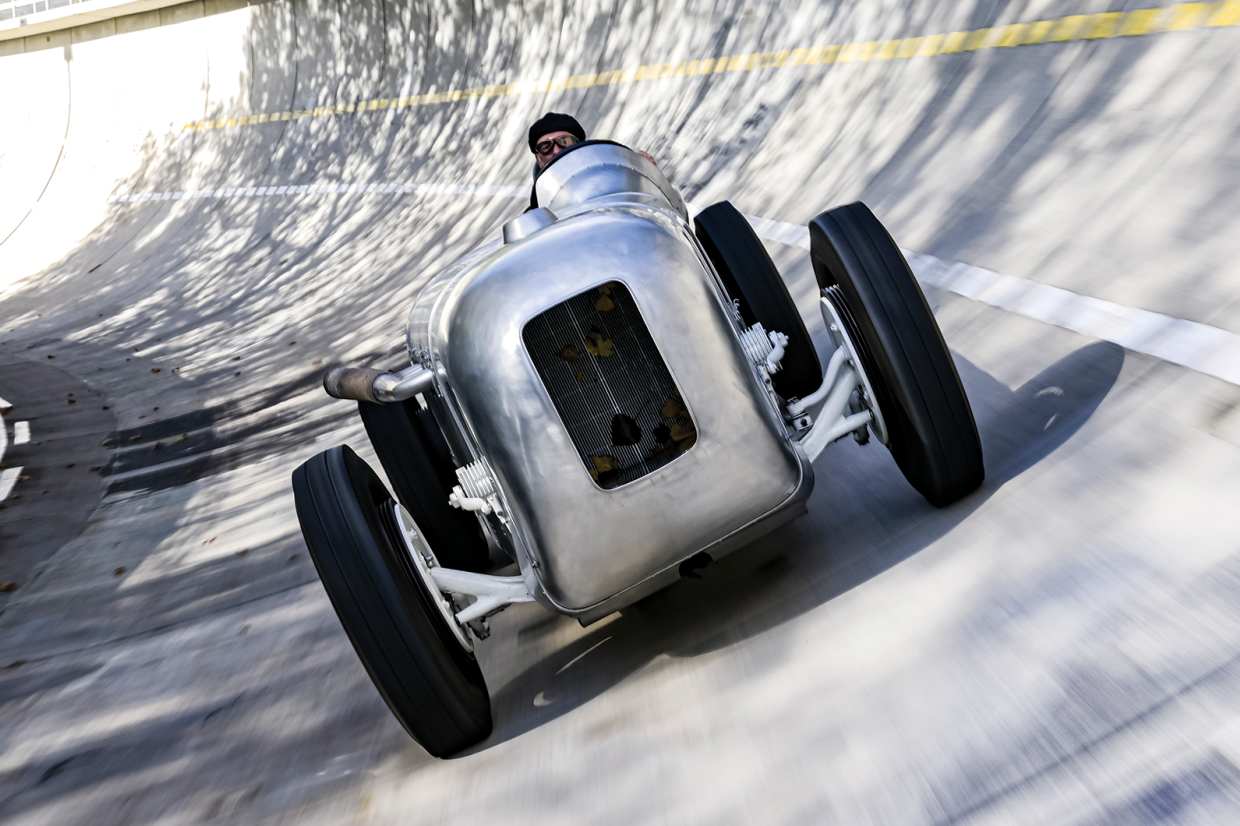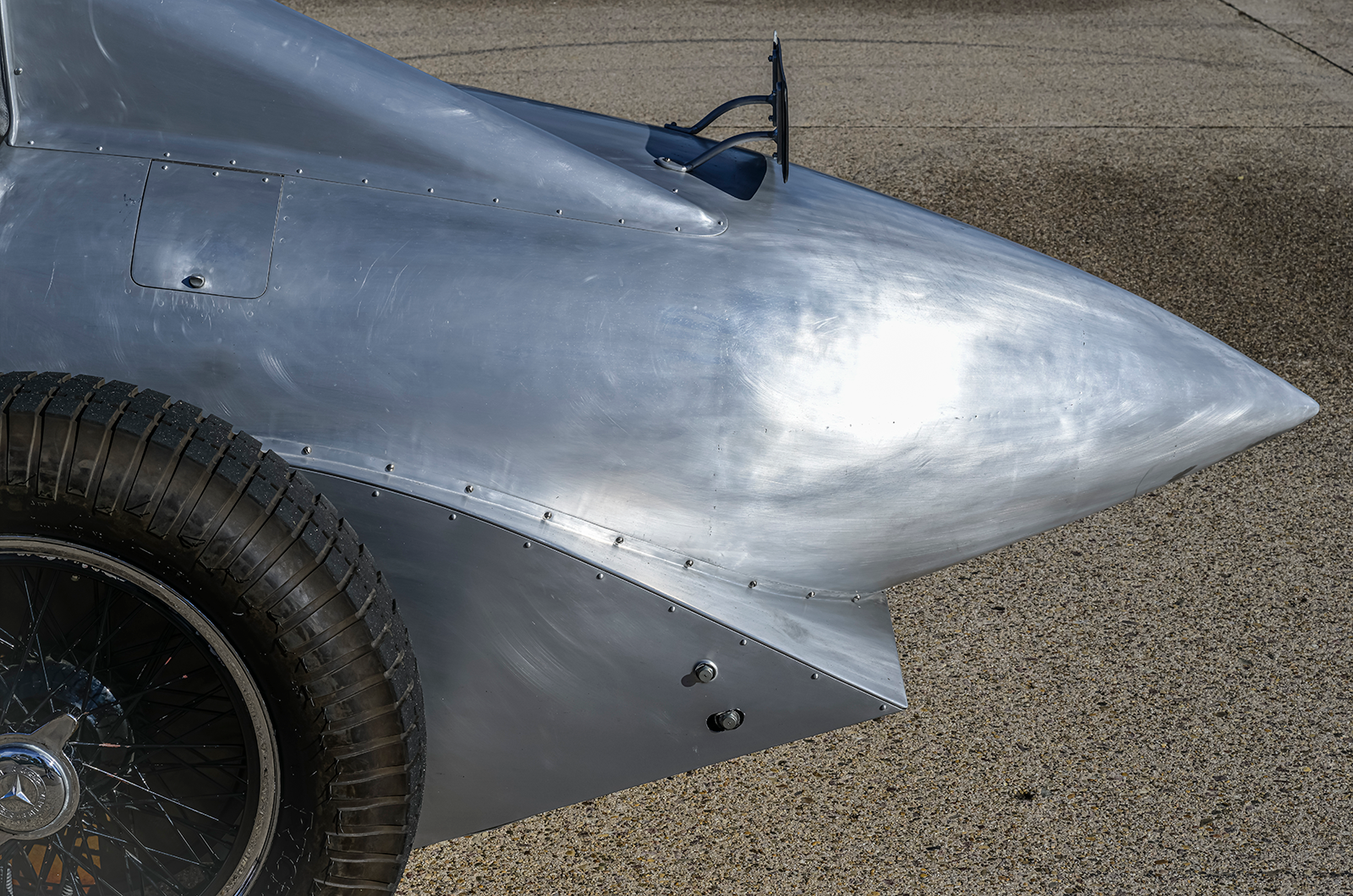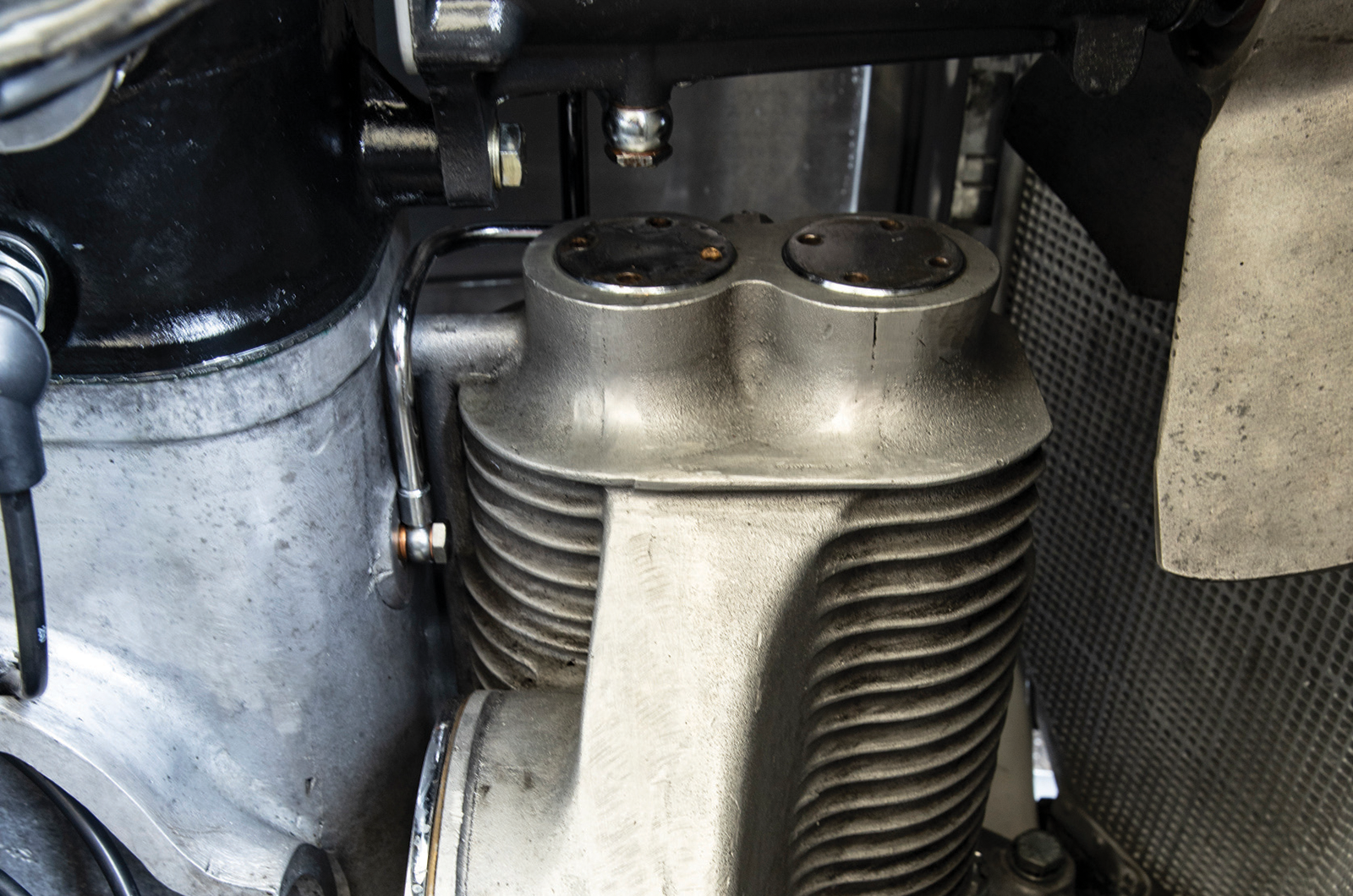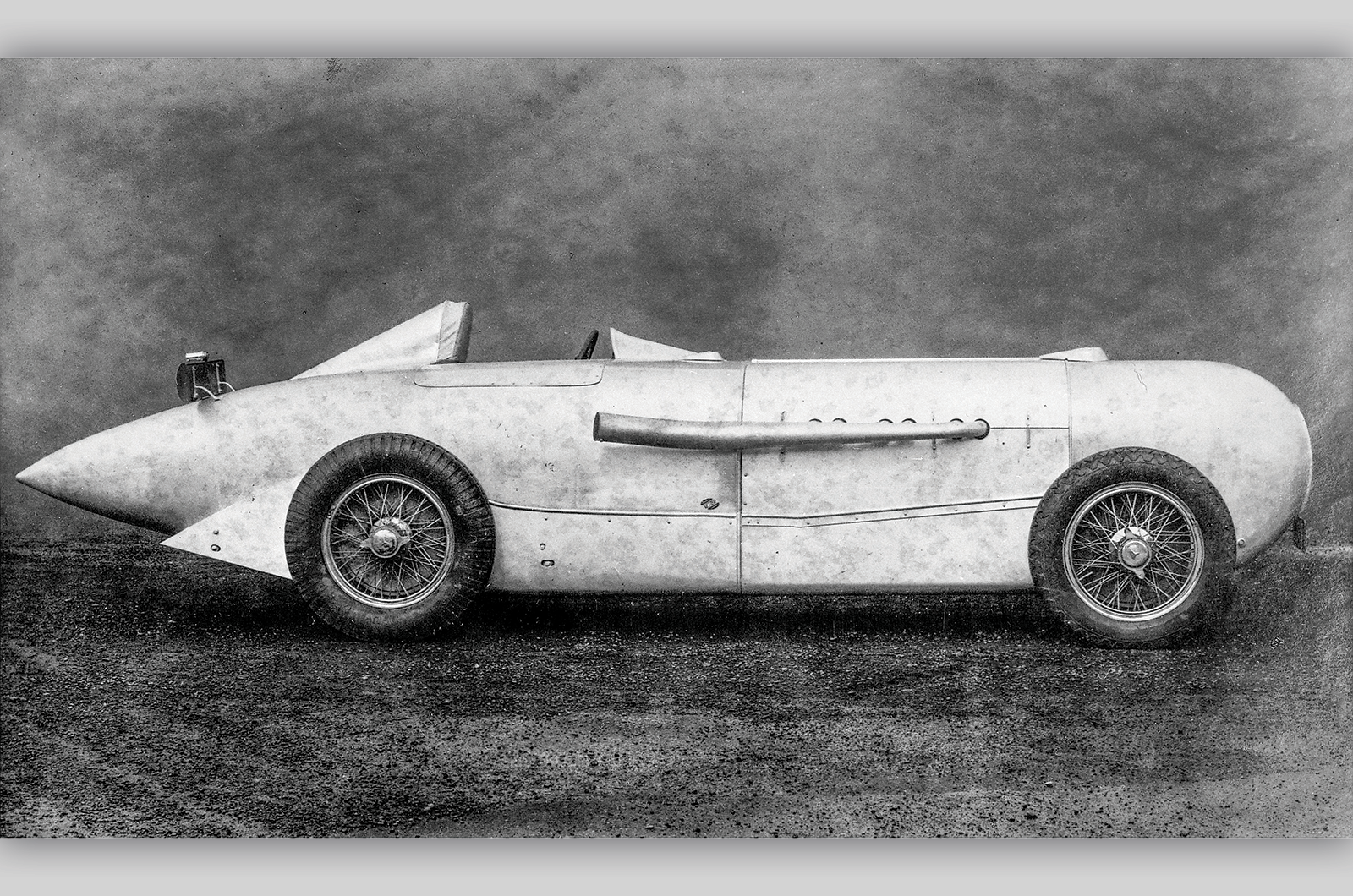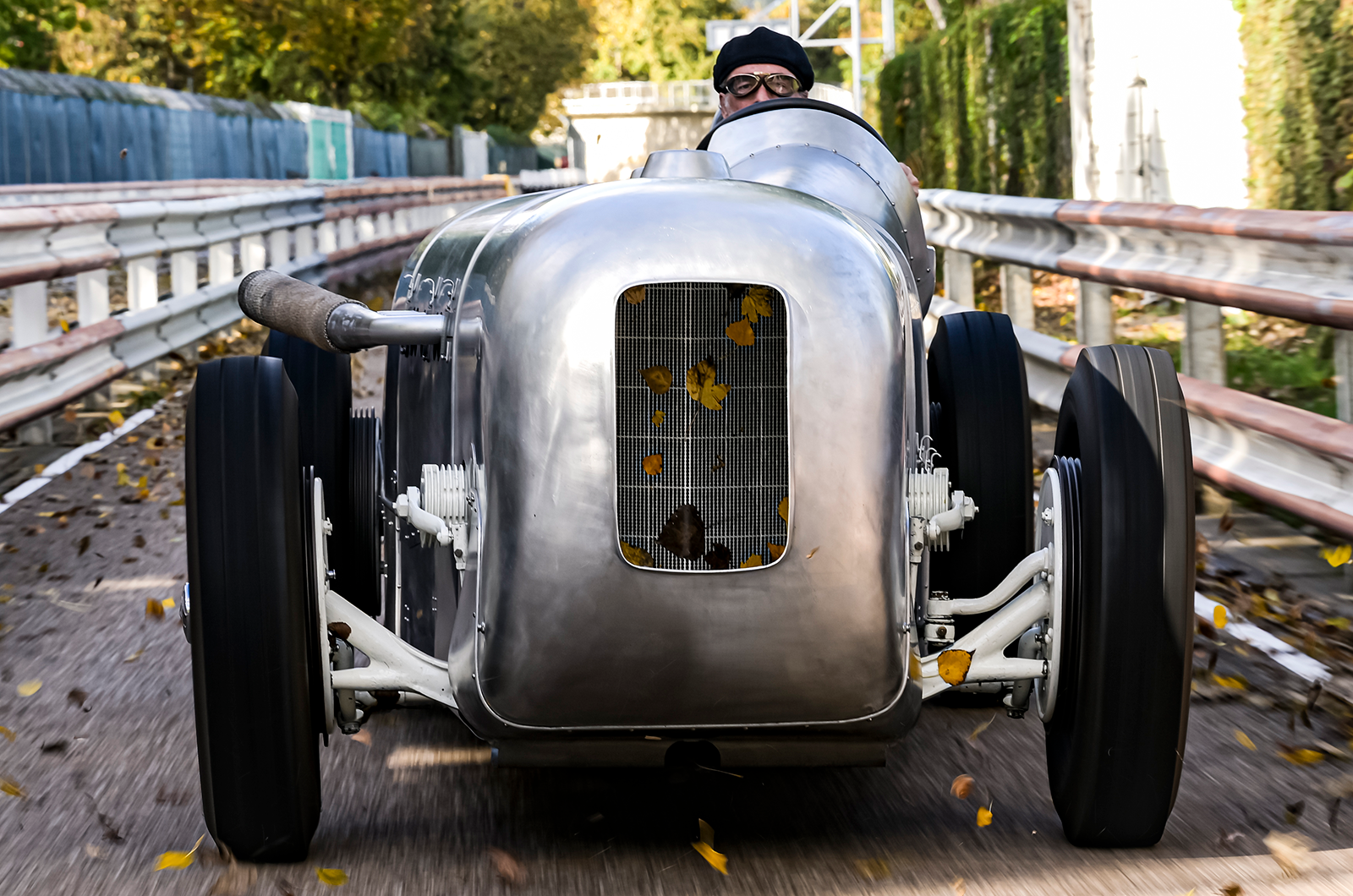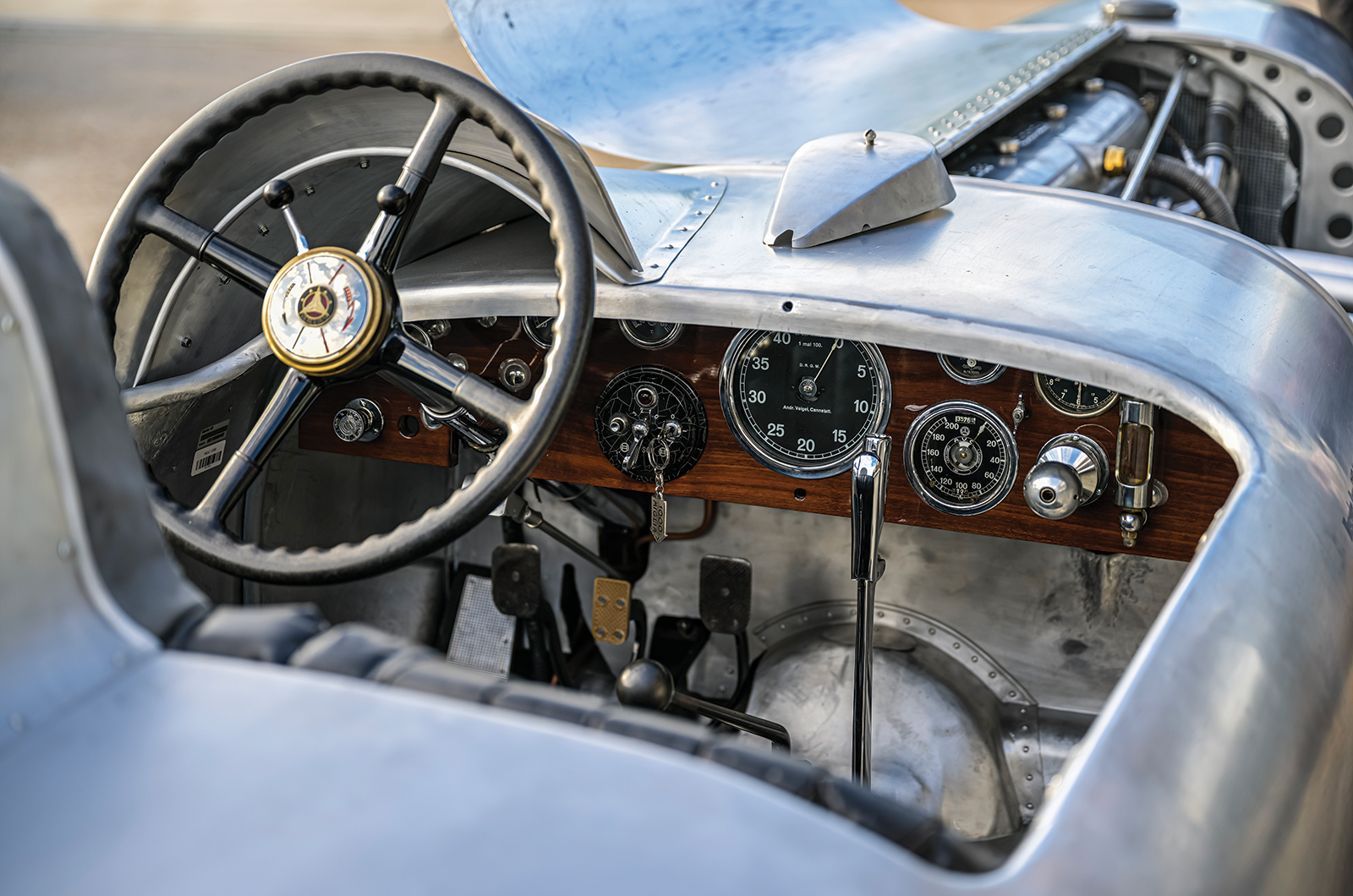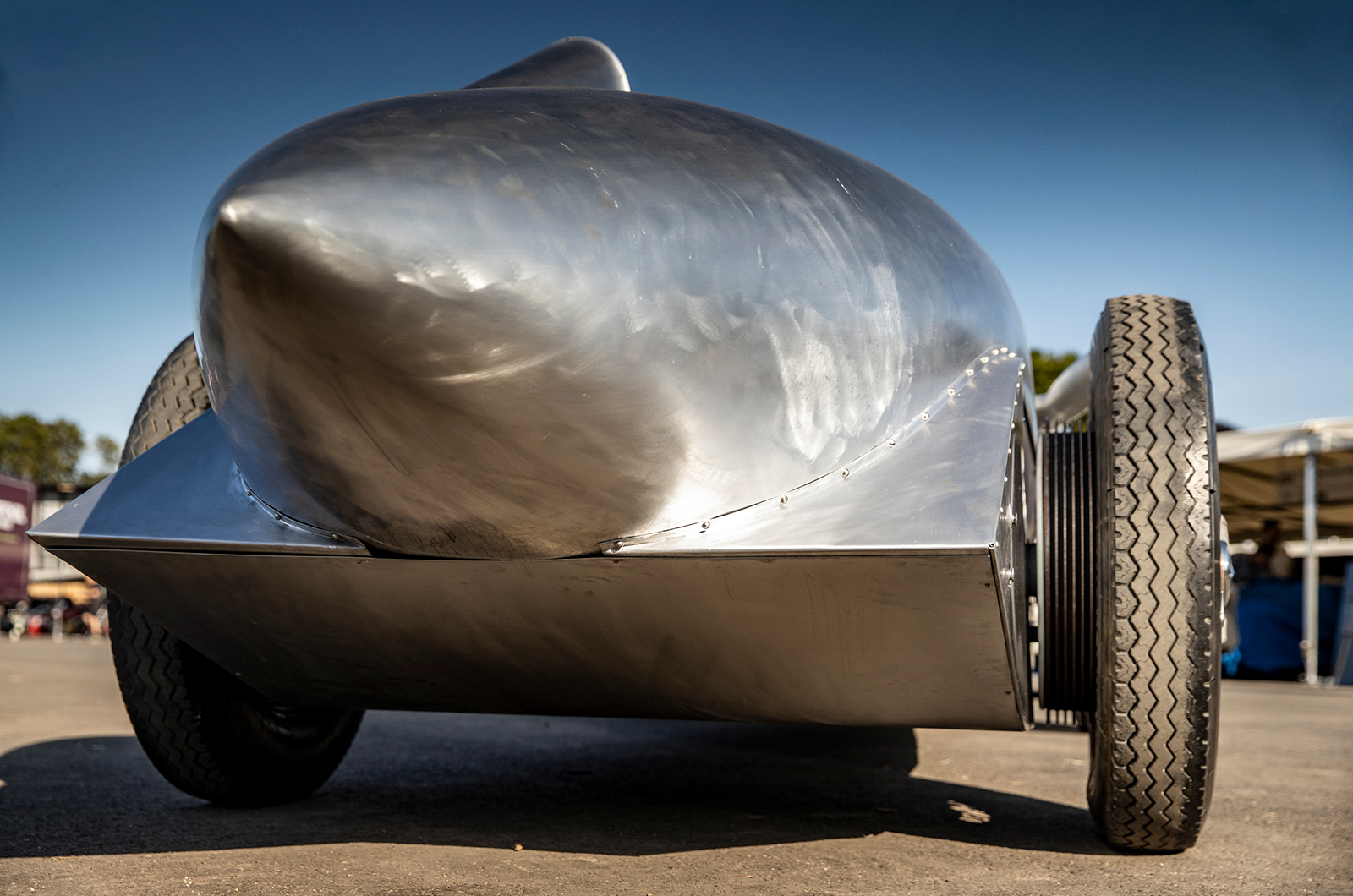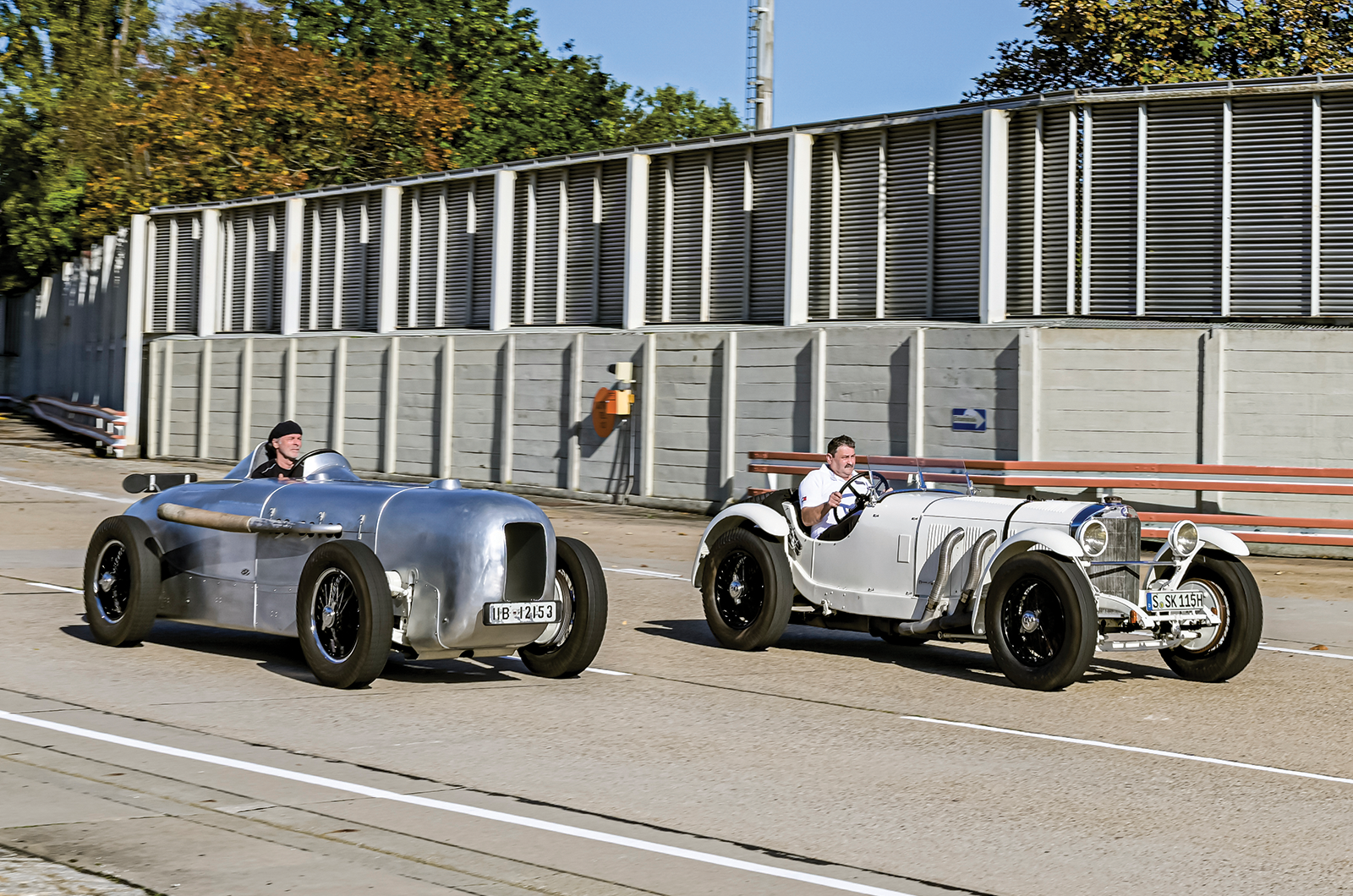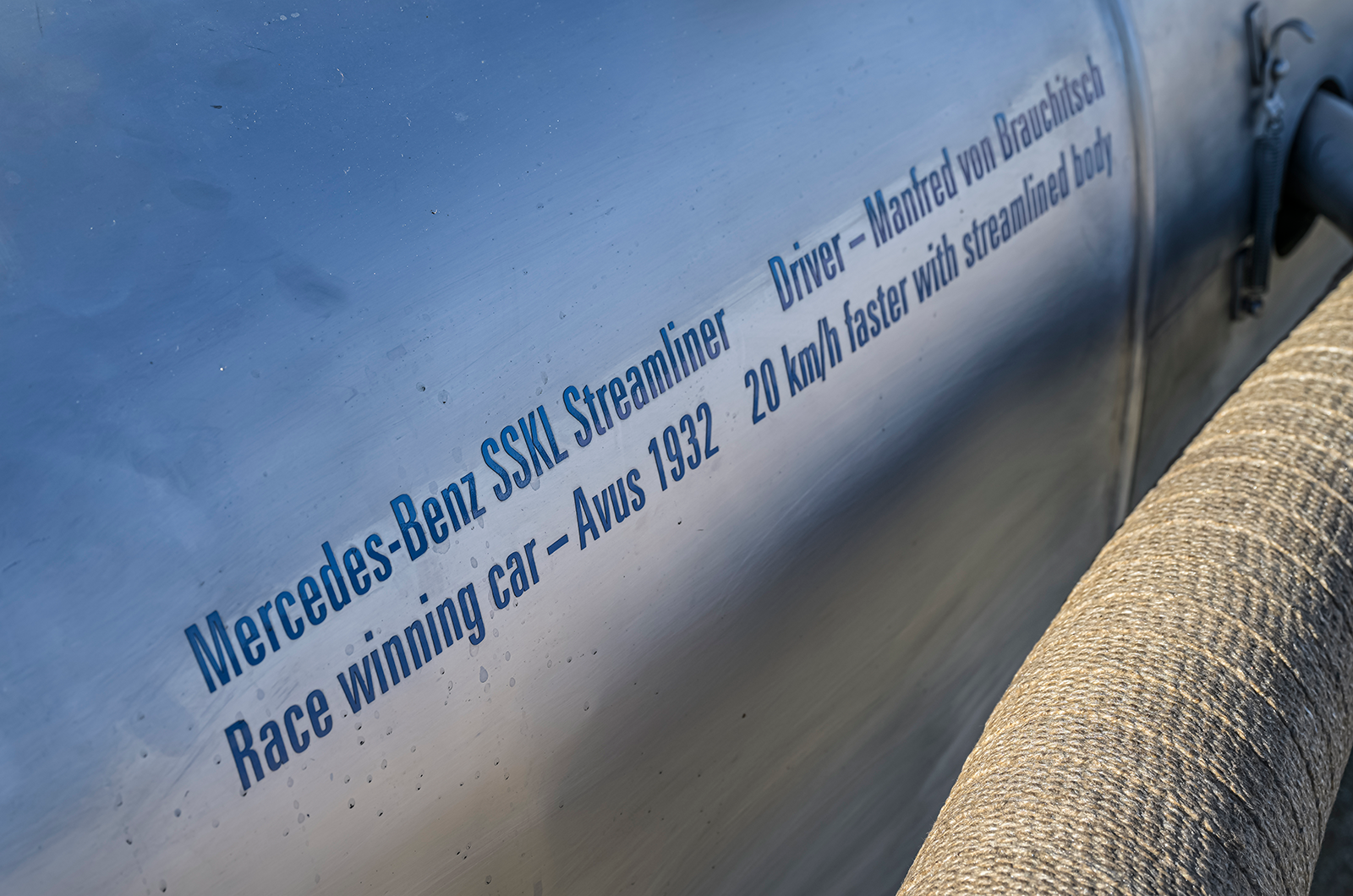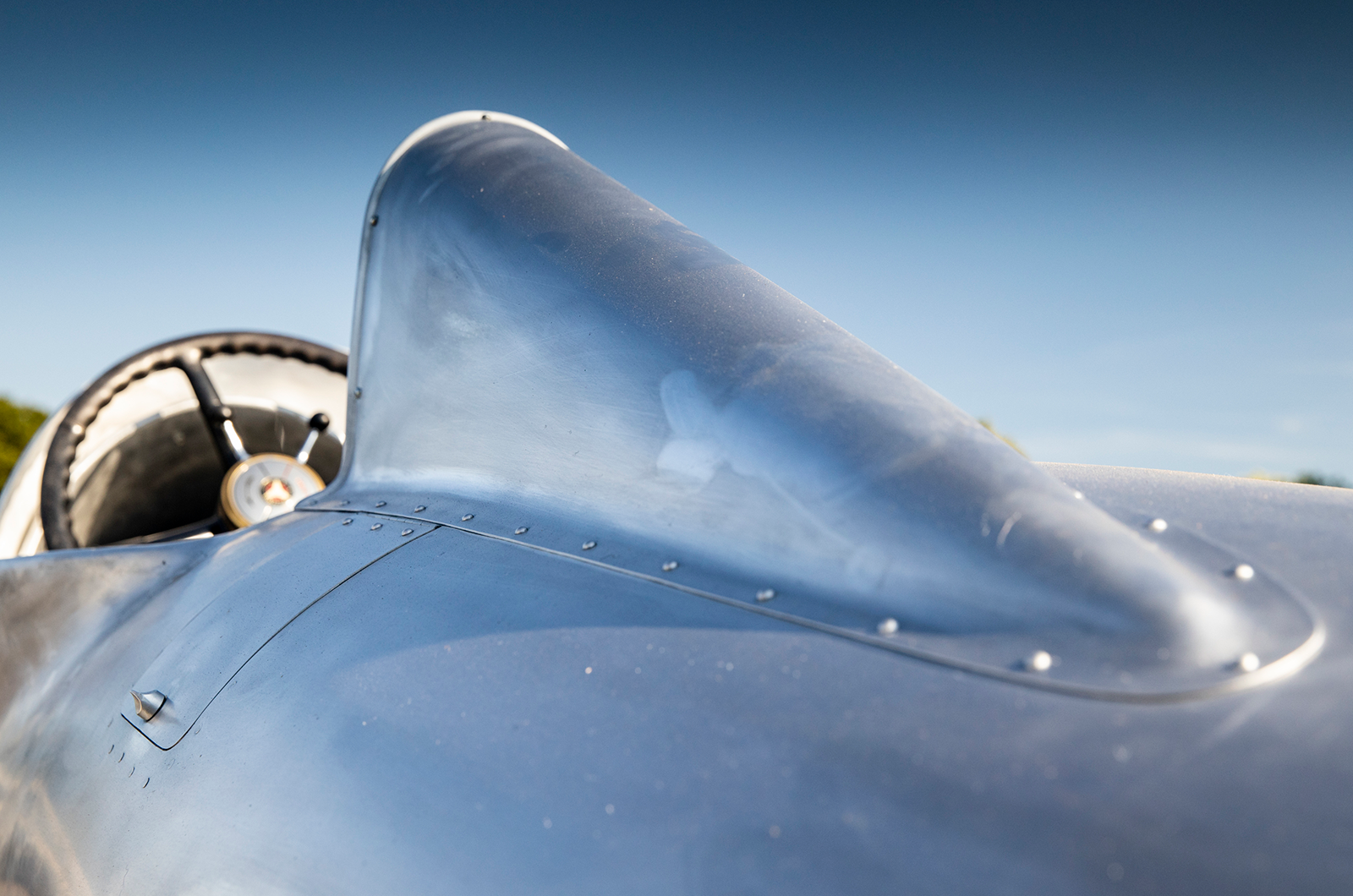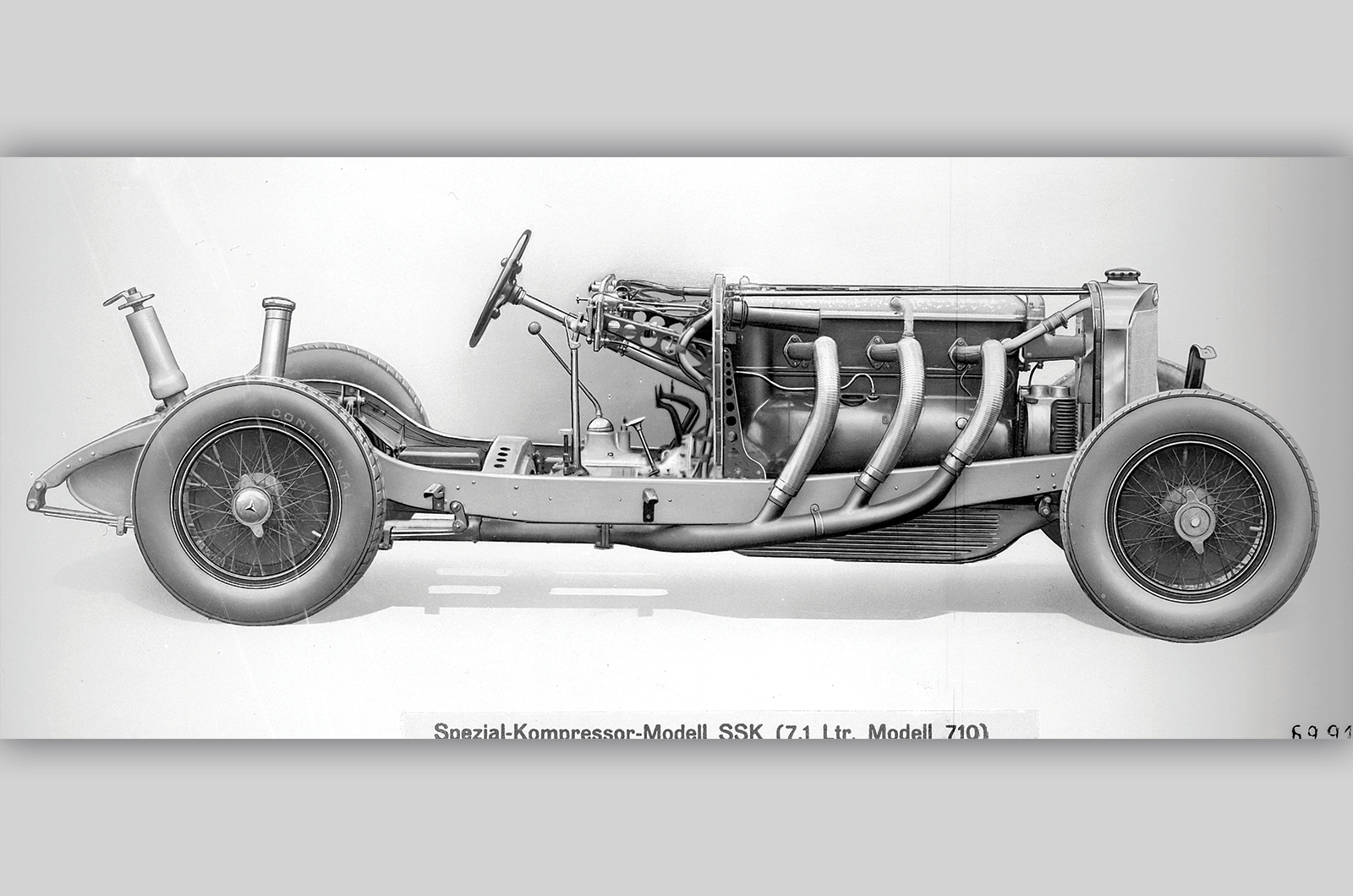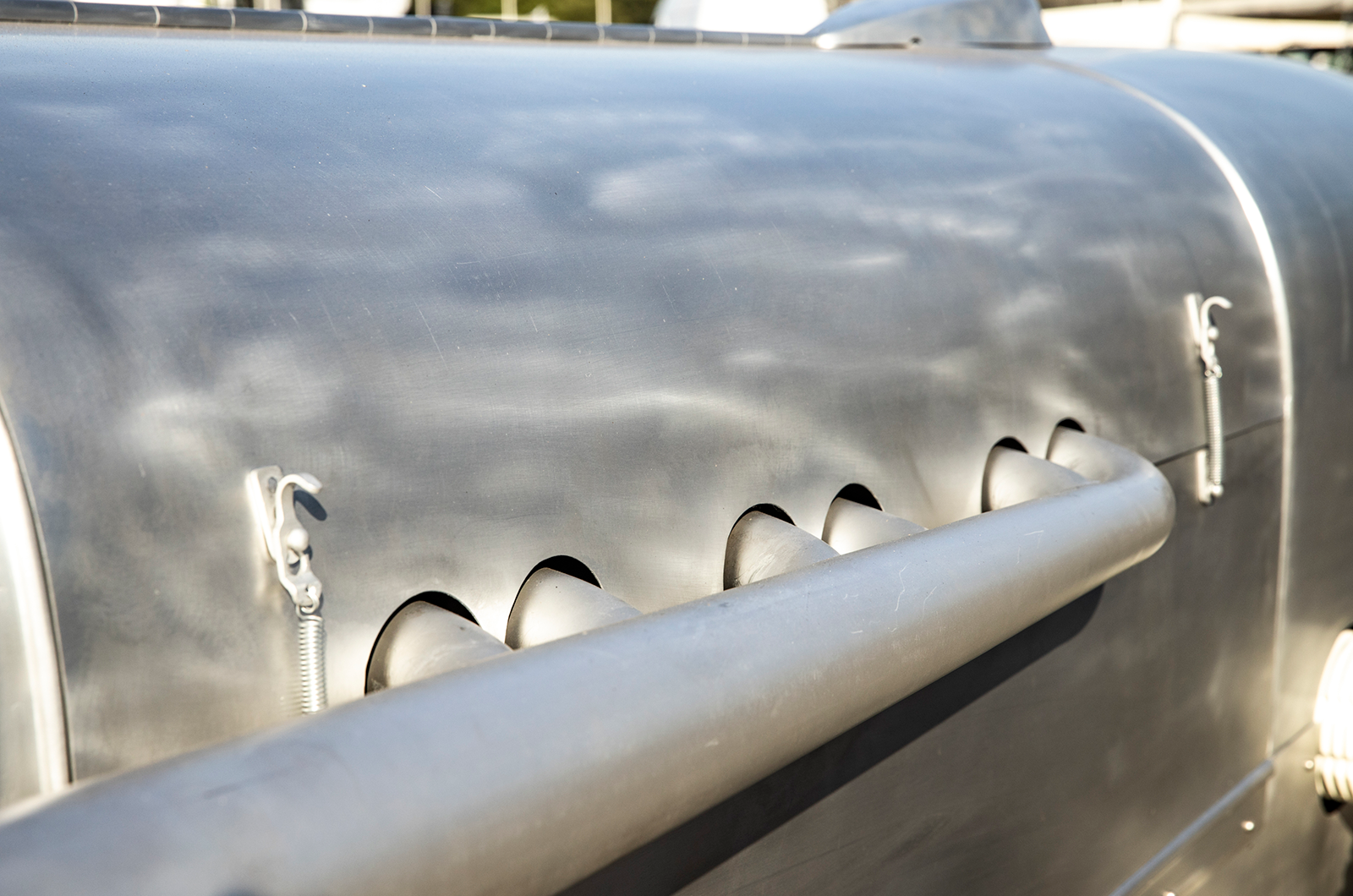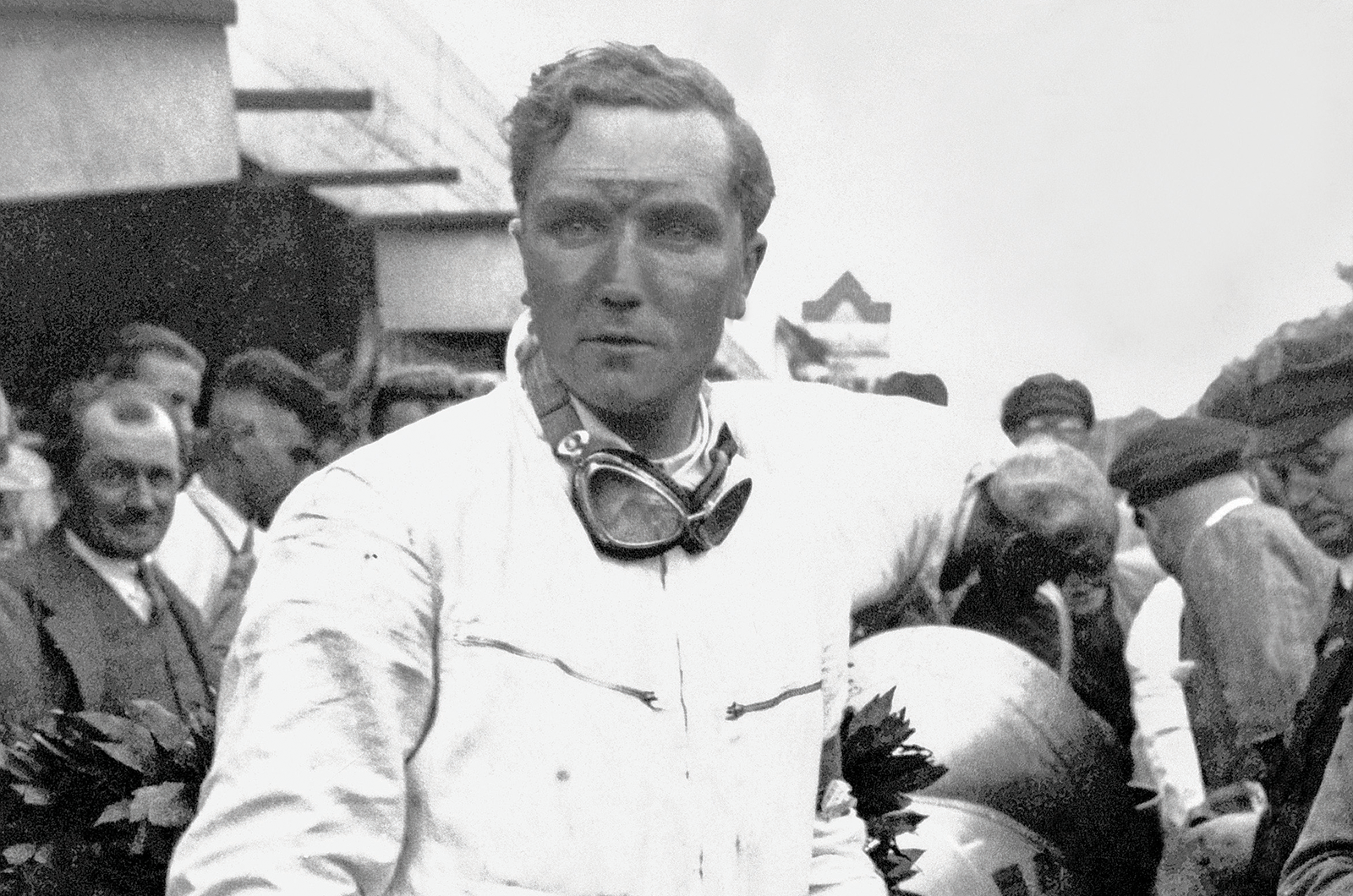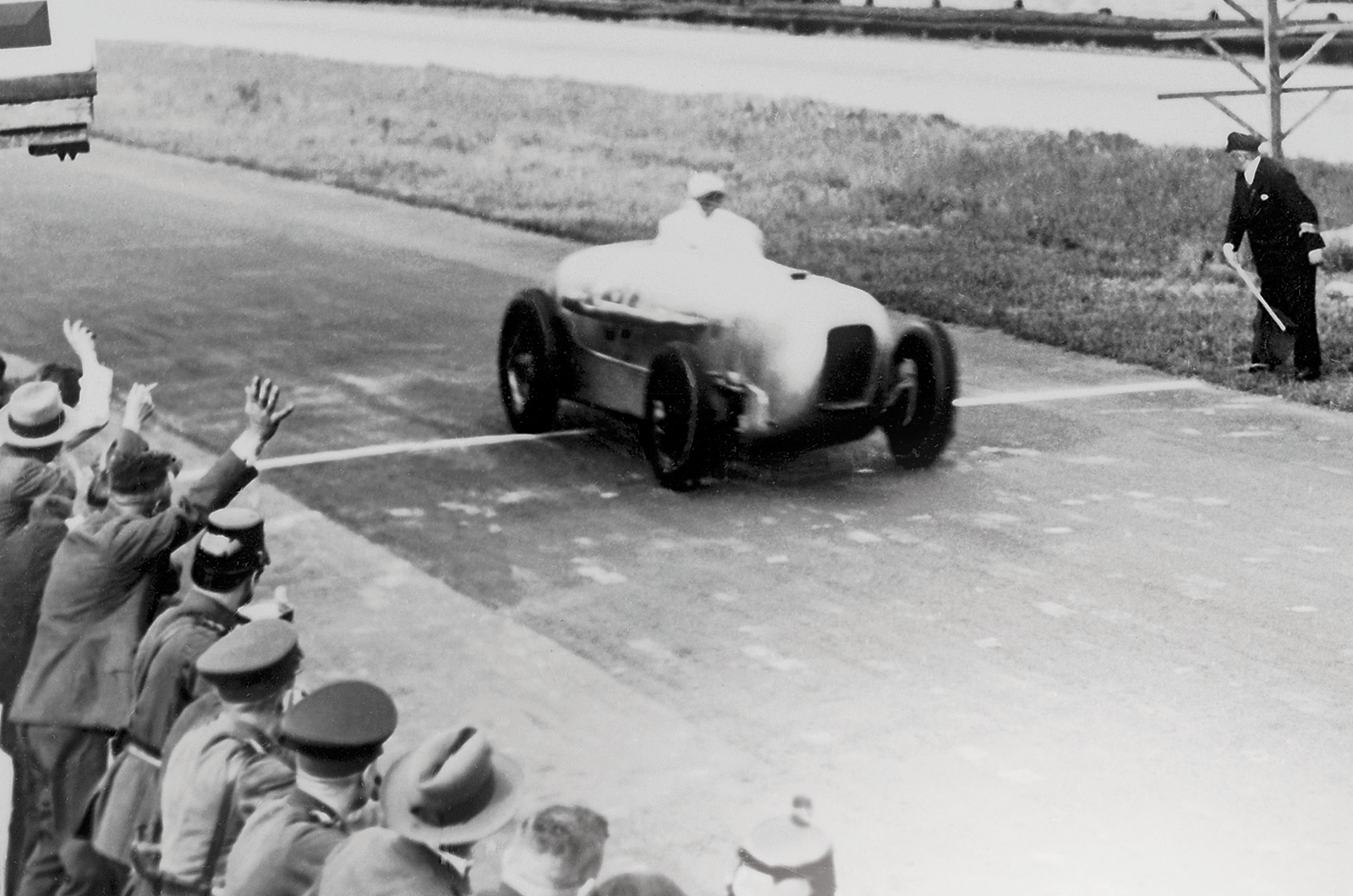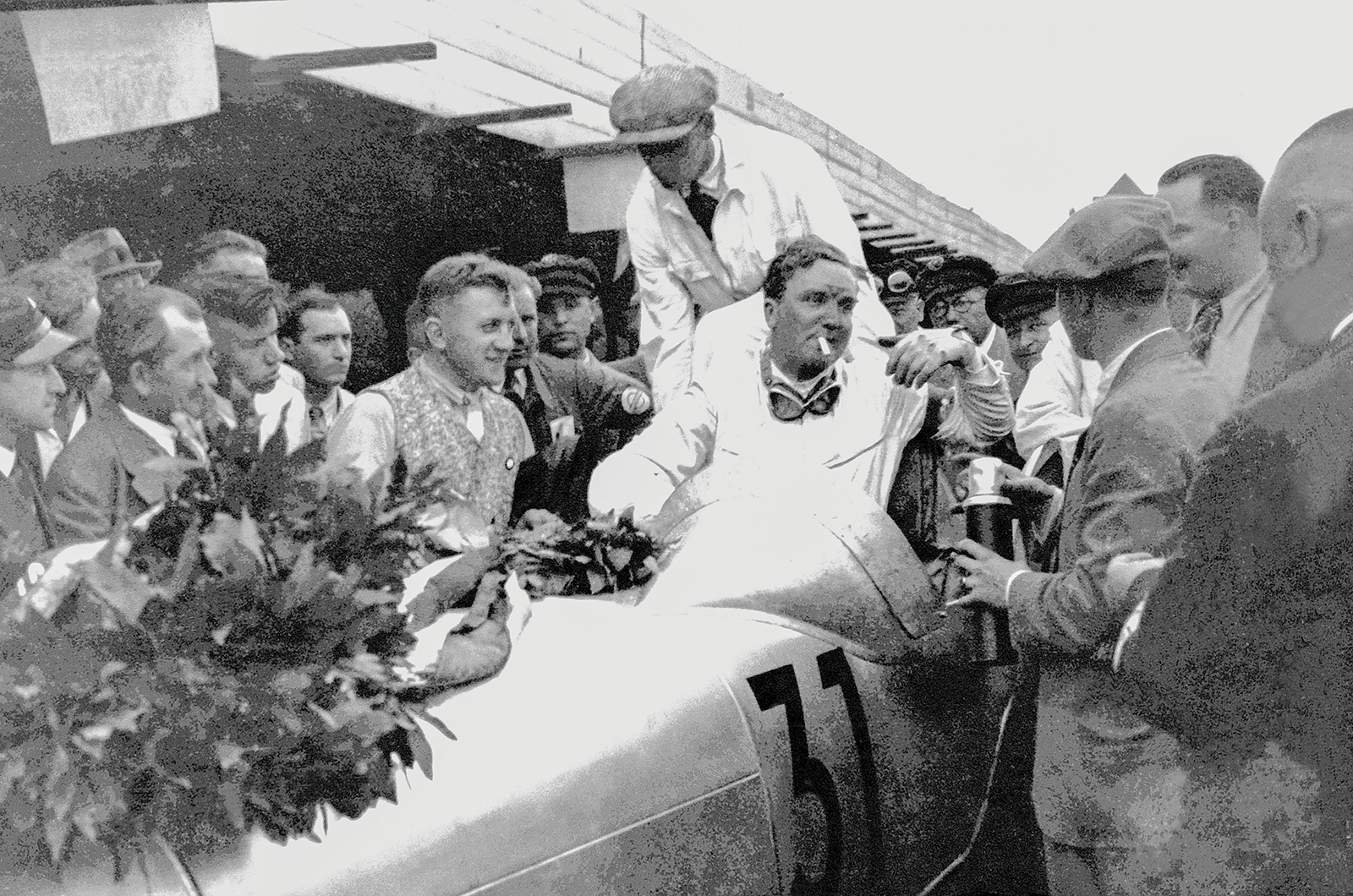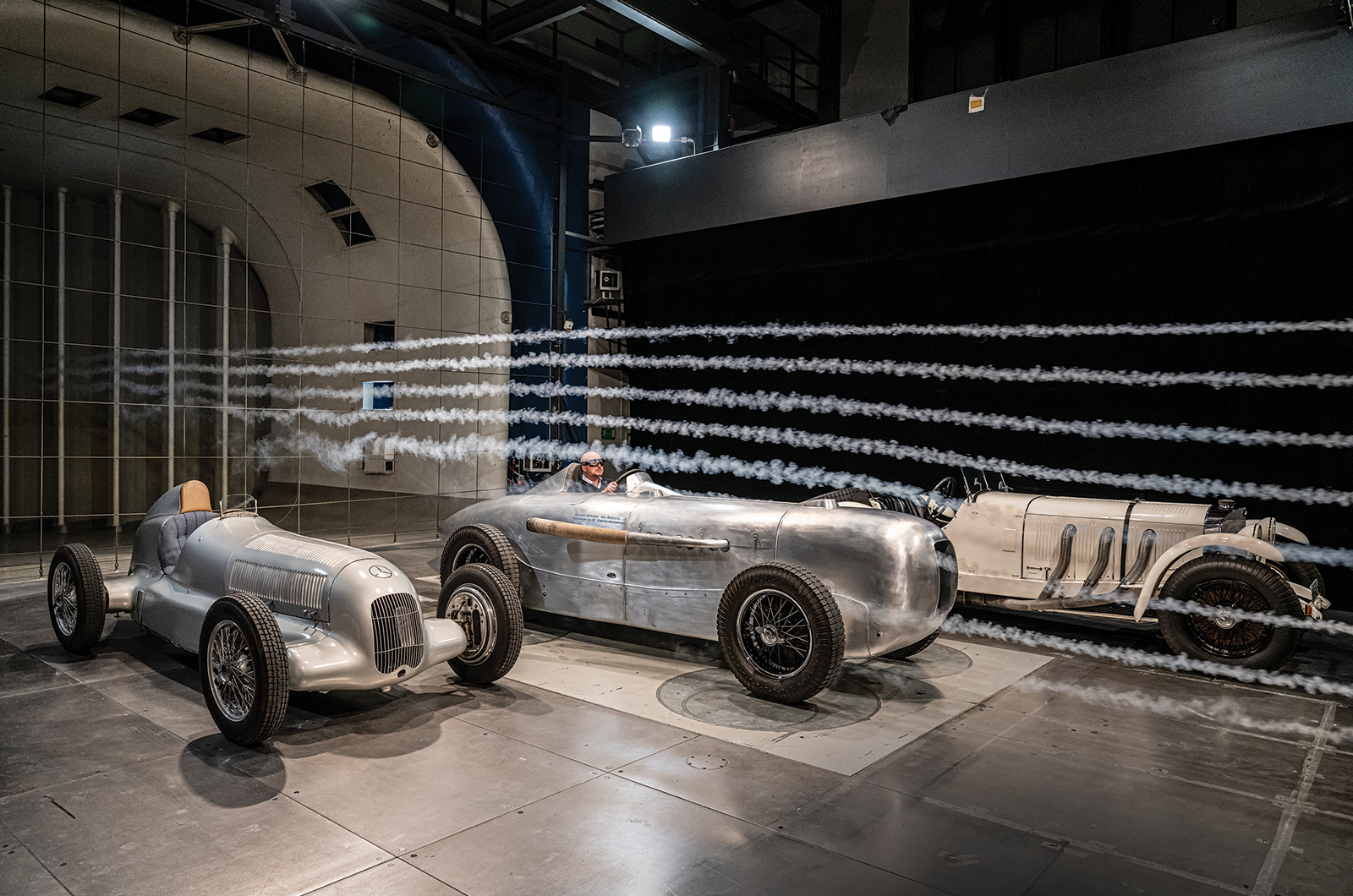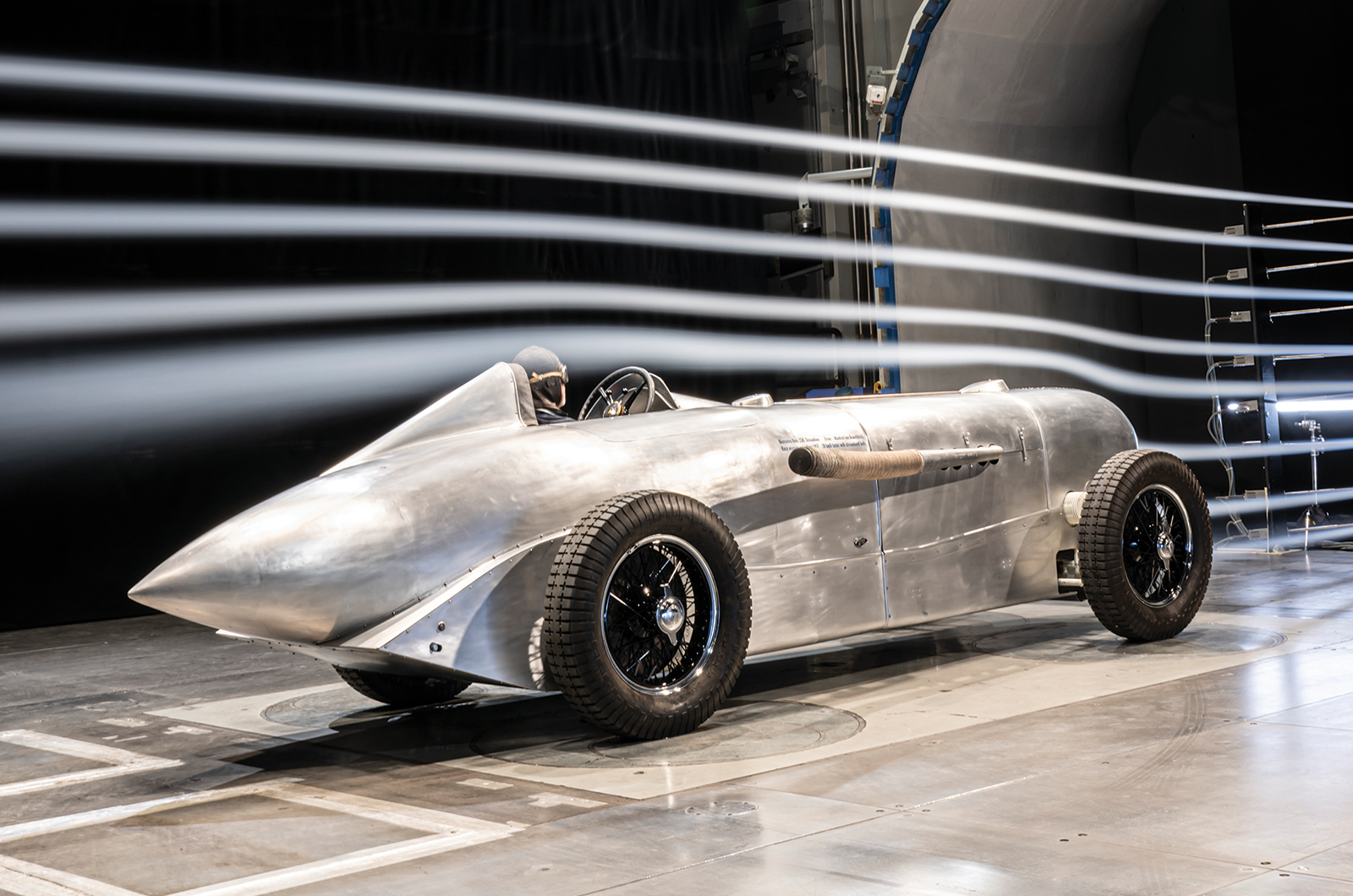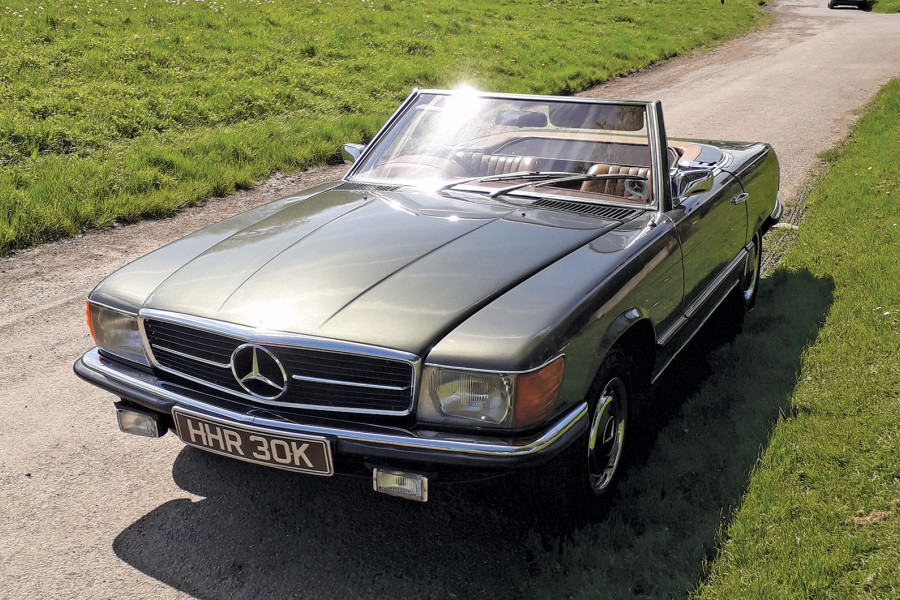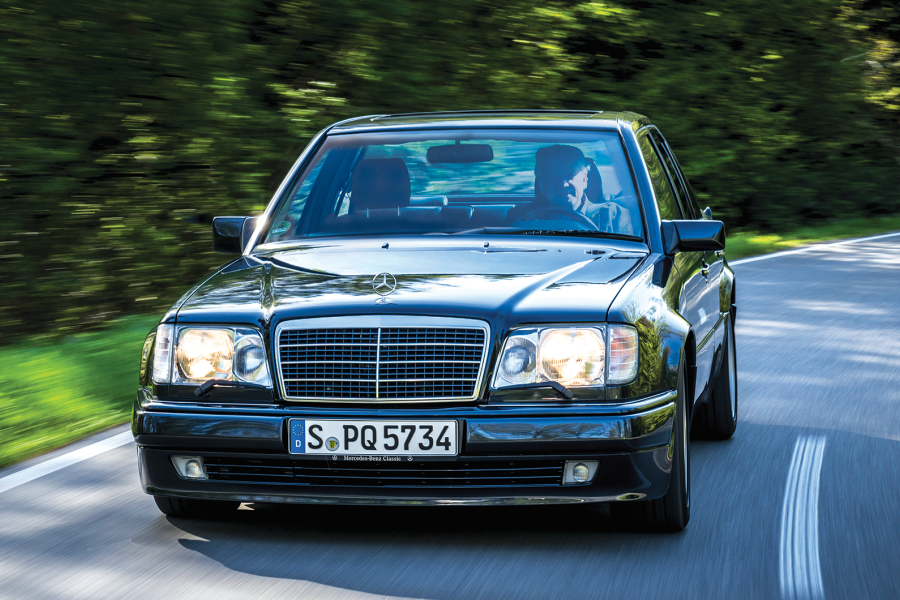In an audacious move during the final lap, von Brauchitsch surprised Caracciola on the back straight, before defending his lead through the last corner and down the long straight to take the win, crossing the line 3.6 secs ahead of his countryman.
The Bugatti Type 51 driven by Hans Stuber came home in third – some three and a half minutes later.
The second SSKL, with a conventional body and driven by Hans Stuck, was fourth, with the final position in the over-2-litre class taken by Ernst Kotte in a Maserati, the other 16 starters having retired or crashed.
Across 294.4km, von Brauchitsch’s SSKL averaged in excess of 194kph (121mph) for a little more than one and a half hours.
Taking the unique streamliner recreation for a lap of the Mercedes-Benz test track at Untertürkheim
The curious SSKL’s aerodynamic bodywork showed its considerable advantage over Stuck’s more conventional car in fourth, which posted an average speed around 10kph lower, and proved instrumental in allowing the older, heavier Mercedes-Benz to beat the much-fancied combination of Caracciola and Alfa Romeo.
The victory caused a sensation, turning von Brauchitsch into a household name in Germany, his ‘Silver Arrow’ having brilliantly – and very publicly – demonstrated the effectiveness of aerodynamics in racing cars.
Von Koenig-Fachsenfeld’s idea to rebody the SSKL gave the ageing Benz a competitive edge against newer, technically superior rivals.
A re-routed exhaust improved the Mercedes’ aerodynamics
While the Avus victory is certainly not the first instance of aerodynamics having been explored with racing cars – Mercedes itself having done so with the likes of the Benz-Tropfenwagen and 1909 Blitzen Benz – this was a graphic display of their emerging importance and application within the automotive sphere.
In addition to von Brauchitsch’s win, the ‘Silver Arrow’ also set a number of speed records, with the international benchmark over 200km broken during the Avus race, thanks to the enclosed SSKL’s 194.5kph average.
That von Brauchitsch wrestled the big Benz around Avus for just over an hour and a half at speeds significantly in excess of what I’m experiencing today is difficult to comprehend.
Those rod-actuated brakes have a physical link to the drums, but even the most prodigious of pushes does little to slow the weighty Mercedes-Benz.
Manfred von Brauchitsch and the rebodied SSKL beat all comers at the Avusrennen in 1932
Pleasingly, the steering rewards with surprisingly deft immediacy, those big, exposed wheels out front, bobbing about on their suspension, generating a quick direction change that feels at odds with the physicality required elsewhere.
The gearshift is a challenge, the non-synchro ’box requiring a swift double-declutch to avoid clumsily crunched cogs.
Mercifully, such is its tractable, low-rev urgency, once you’ve worked your way up through the gears you seldom need to shift down around this relatively small track.
‘Commentator Paul Laven described von Brauchitsch’s SSKL as a “Silver Arrow” as it sped down the straights’
The engine revs at a maximum of around 3600rpm, but it doesn’t need to be worked hard to deliver vivid pace, thanks to the 7.1-litre straight-six producing its peak torque at around 1900rpm, so it shifts its not-inconsiderable bulk with relative ease.
Push through the first portion of the central accelerator pedal’s travel and the Roots-type supercharger spools up, forcing another 60bhp on top of the normally aspirated unit’s 240bhp.
That additional push is accompanied by a wailing scream that’s more frightening – and addictive – than the increased velocity it delivers.
A victorious von Brauchitsch celebrates with mechanic Willi Zimmer
It’s enough to have you forgetting the brakes’ lack of bite, something von Brauchitsch would have had to manage, repeatedly, as he came down from far higher speeds at Avus; his legs must have been like the pistons of the big ‘six’ to race this car at the speeds he did, for the time he did.
The drive for streamlined cars, both on track and road, accelerated markedly in the ensuing years, which makes von Koenig-Fachsenfeld and von Brauchitsch’s missing-link SSKL hugely significant.
Not only did it inform every racing car that followed, but also gave birth to a name that is still used to this day.
Thanks to: Michael Plag, Mercedes-Benz Classic
Images: Mercedes-Benz Classic
Tunnel vision: The Mercedes-Benz SSKL in the wind
The Mercedes-Benz streamliner replica with a W25 (left) and standard SSKL (right)
This SSKL presents a blend of radical thinking mixed with old-fashioned technology, with its race win being proof of concept, but just how effective von Koenig-Fachsenfeld’s body revisions are had never previously been measured – at least outside the spectacle of that 1932 Avusrennen weekend.
Until today, that is, because the SSKL now sits in Mercedes-Benz’s own wind tunnel to be scientifically measured for the first time.
The venue itself is interesting, being the oldest automobile-specific wind tunnel.
Constructed in 1939, the 8.5m-wide tunnel is capable of up to 250kph (156mph) and is still used by Mercedes-Benz today.
Post-war, when it ran at full speed it could draw so much power that it had the potential to – and occasionally did – kill the floodlights in the Stuttgart football stadium.
“The way our club currently plays I wish we could still turn them off,” mutters the technician, wryly.
That’s not going to happen today, though the SSKL will be put ‘in the wind’ for measurement, alongside a regular SSKL and a later 1934 W25 GP car for comparison.
In the wind tunnel, Mercedes’ streamlined SSKL recreation revealed much about early automotive aerodynamics
Aerodynamicist Martin Konermann has run the numbers on each, pointing out that the unique body on the SSKL immediately presents a smaller frontal area in comparison to the standard car, aided by the removal of the headlights, the fully enclosed chassis, rounded nose, enclosed cockpit with aeroscreen, tapered tail, faired-in rear axle and re-routed exhaust.
Its improved slipperiness is obvious when the smoke is turned on, with the trails passing over to reveal fewer swirls and vortices compared to the standard car.
Martin also highlights that engine cooling is significantly enhanced, though less advantageous is the fact that von Brauchitsch would have been busy at speed, thanks to a fair bit of lift over the rear axle, which makes his efforts at Avus even more heroic.
Overall, it presents 1.6m2 surface area compared to 1.7m2 for the standard SSK, and the coefficient of drag is reduced from 0.914 with the SSKL to 0.616Cd for the streamliner.
In comparison, the later 1934 W25 Grand Prix car offers a 1.2m2 area and 0.614Cd.
Those numbers would be poor on a truck today, but in the early 1930s, when automotive aerodynamics was in its infancy, the improvements the SSKL streamliner made were significant, and well proven on the track.
Enjoy more of the world’s best classic car content every month when you subscribe to C&SC – get our latest deals here
READ MORE
Aston Martin DB5 vs Mercedes-Benz 300SL vs Ferrari 275GTB: million dollar babies
Garage greatness: a homemade ode to a golden Grand Prix era
Alfa Romeo 8C: driving a rare ‘Long Chassis’
Ballot 3/8 LC: the first Italian Grand Prix winner
